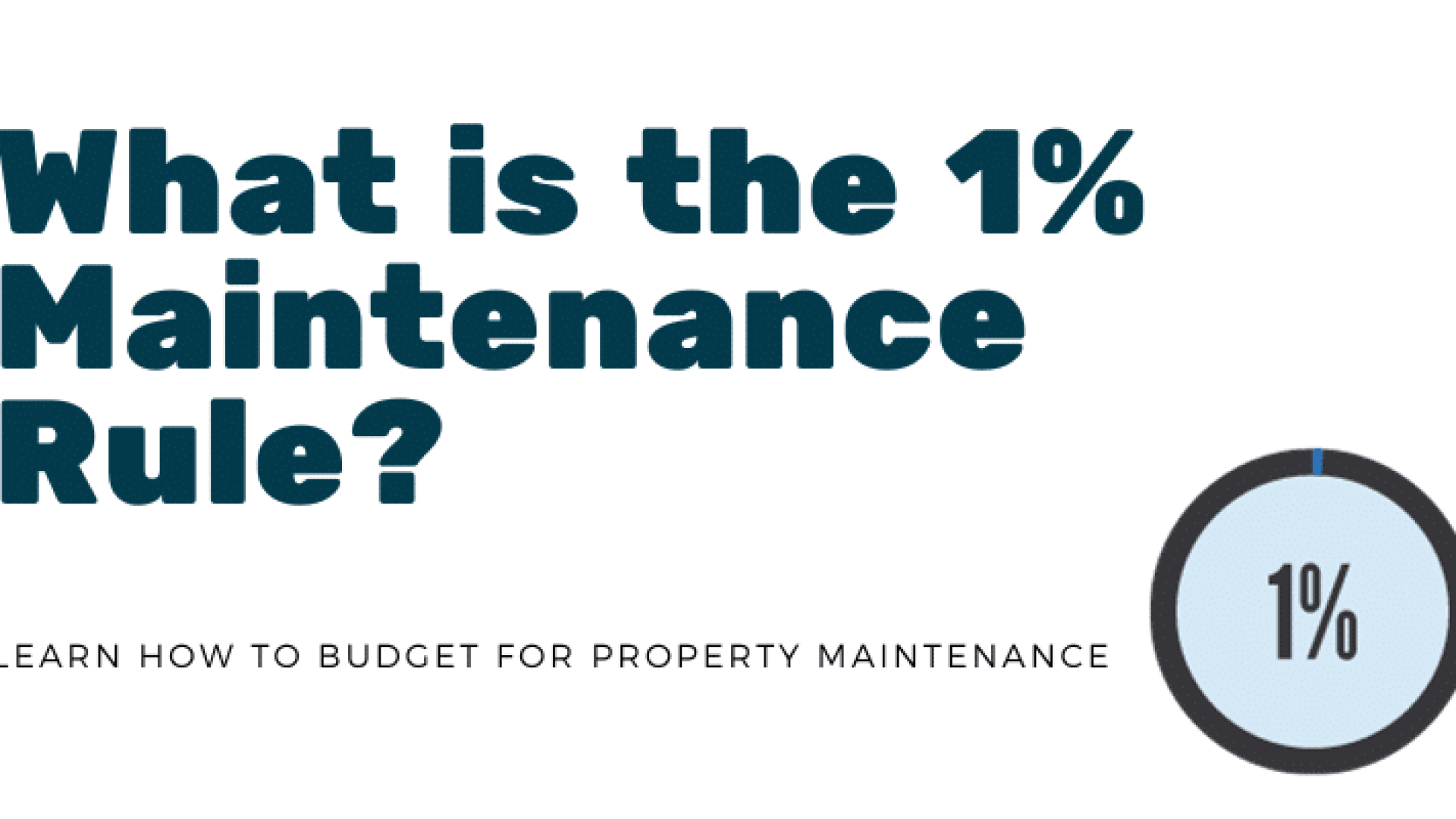Whether you are a property manager overseeing a portfolio of residential properties or a homeowner, budgeting for property maintenance can be daunting. Houses have a finite lifespan, and regardless of how recently your property was constructed, periodic maintenance will be necessary.
Budgeting for maintenance issues is tricky because maintenance repairs can be quite unpredictable. You don’t always know when a pipe may burst or an electrical problem will occur. However, there are some rules that you can follow to help you understand how much you should set aside to deal with maintenance issues. In this article, we will discuss the 1% maintenance rule.
You may have heard of the 1% rule in real estate. This rule helps real estate investors determine if a property is a sound investment. According to Rocket Mortgage, for an investment to pass the 1% rule, the monthly rent must be no less than 1% of the purchase price. For example, if your home has a purchase price of $250,000, you should charge your renters at least $2,500. It may not be a sound investment if that is too much for the property or market conditions.
When it comes to property maintenance, the 1% rule applies. This rule states you should save 1% of the property purchase price for maintenance issues. Using the same example from above, if you purchase a property for $250,000, you should budget $2,500 a year for maintenance and upkeep.
There are pros and cons to this rule when it comes to property value.. If housing prices increase, the cost of labor and parts will likely increase. However, the purchase price of a house doesn’t always accurately portray how much should be budgeted for maintenance. For example, you purchase an older home in bad condition. The purchase price may be much lower than a new home but it will require much more maintenance. This means the 1% rule may not be the best option.
To check out other rules to help you budget for property maintenance, check out this article.
Exceptions To The Rule
The problem is that none of these maintenance budgeting methods like the 1% rule, or the square footage rule are foolproof because unexpected maintenance issues that you may not have budgeted for will always arise. However, there are some ways you can become more predictable with maintenance failures and plan to avoid these costly repairs.
Implementing a more proactive approach to maintenance can help you prolong the life of your assets’ life and predict when failures will occur. This can help you forecast when an HVAC may need replacing or when a water heater is on the fritz. With these preventative measures, you not only get more years out of your assets, but you can predict when costly maintenance emergencies will occur and budget accordingly.
The other best way to plan for unexpected maintenance issues is to start tracking the life cycle of your assets. For example, if you know when an HVAC unit was put in and how often the filter is replaced, you can predict when that unit may need a replacement. Tracking your maintenance expenses year over year is a great way to identify trends and make better budgetary decisions.






